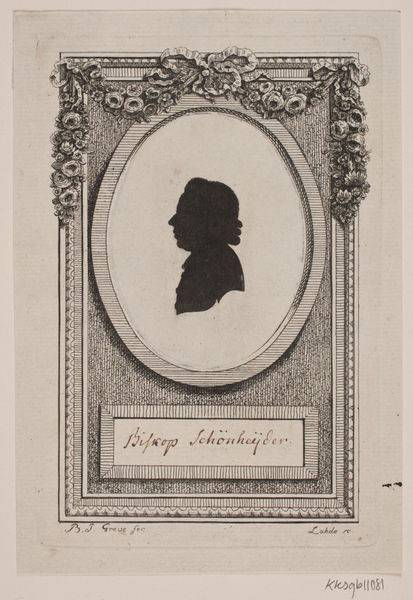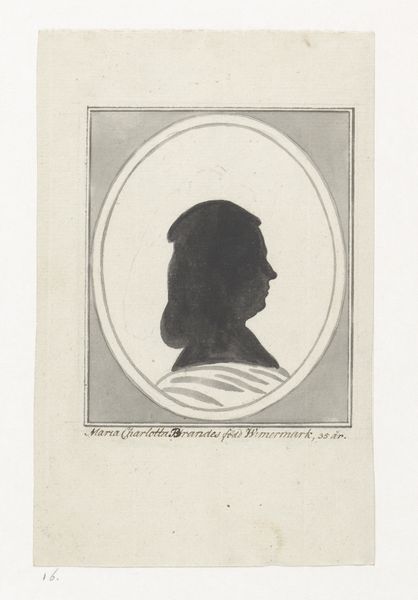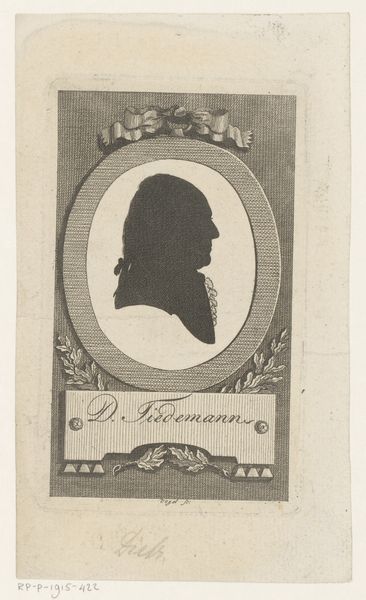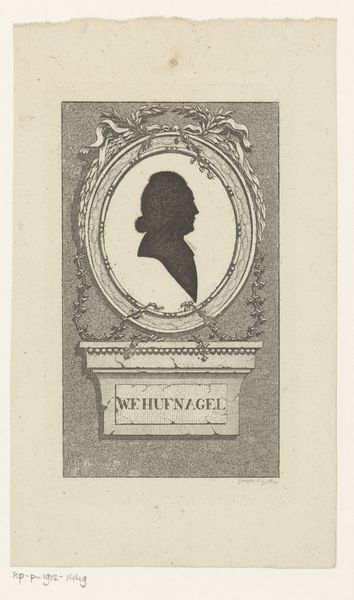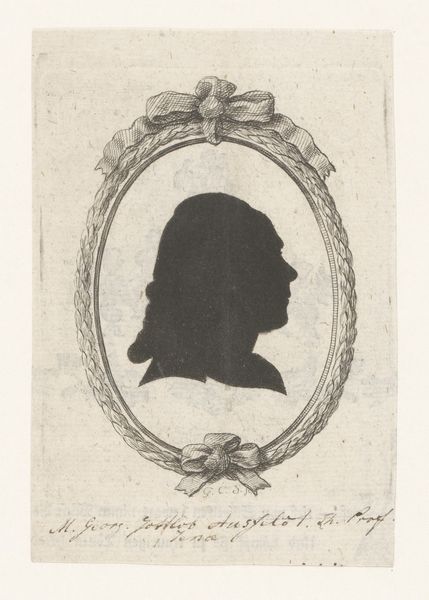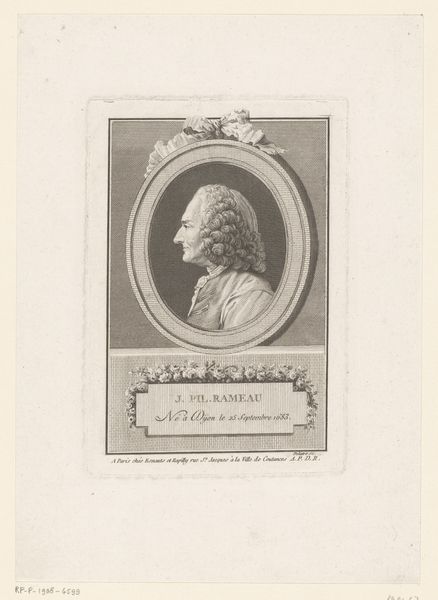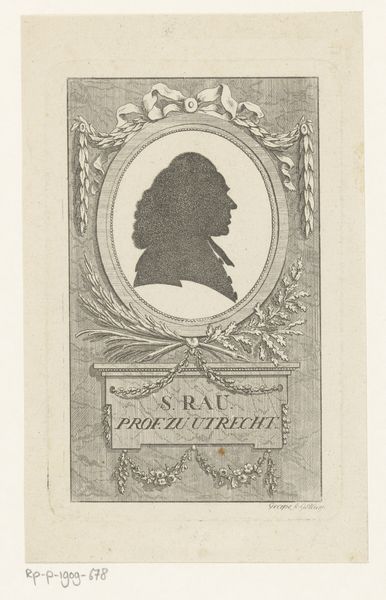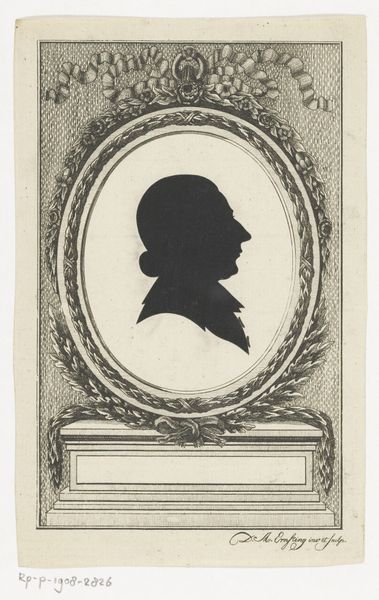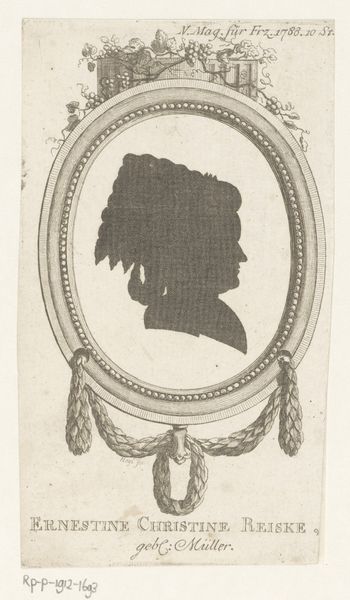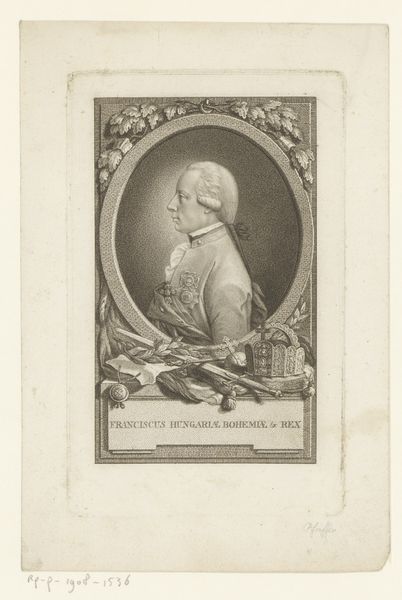
print, engraving
#
portrait
#
neoclassicism
# print
#
geometric
#
line
#
engraving
Dimensions: height 182 mm, width 112 mm
Copyright: Rijks Museum: Open Domain
Editor: Here we have Ernst Ludwig Riepenhausen’s "Silhouetportret van Karl Theodor von Dalberg," made sometime between 1775 and 1840. It’s an engraving, a style of print, with clear neoclassical influences in its geometric composition. It feels so formal and austere to me. How would you interpret this work? Curator: What I find fascinating about this piece is the silhouette itself, and how its popularity coincided with significant socio-political shifts. Silhouette portraits became incredibly widespread as a relatively inexpensive and accessible alternative to painted portraits, opening up portraiture to a broader public. Editor: So, this engraving democratized image-making and access? Curator: Precisely! It moved portraiture away from the exclusive domain of the aristocracy and wealthy merchants, even though it still retains the rigid conventions of portraying authority. Consider the laurel leaves. Editor: Those remind me of Roman emperors. What's the significance of that choice? Curator: Exactly! The print's format attempts to elevate the sitter while remaining in reach for a growing middle class asserting itself in society. The geometric order isn’t merely aesthetic; it's asserting stability and hierarchy during an era of revolution and change. How do you see the setting affecting the viewer today? Editor: I see how neoclassical style with new print technologies, influenced the accessibility of images of public figures! The print allows people to think more about power and representation. Curator: Absolutely. Thinking about access and who gets represented forces us to acknowledge both the democratizing potential and the continued power dynamics embedded within art.
Comments
No comments
Be the first to comment and join the conversation on the ultimate creative platform.
